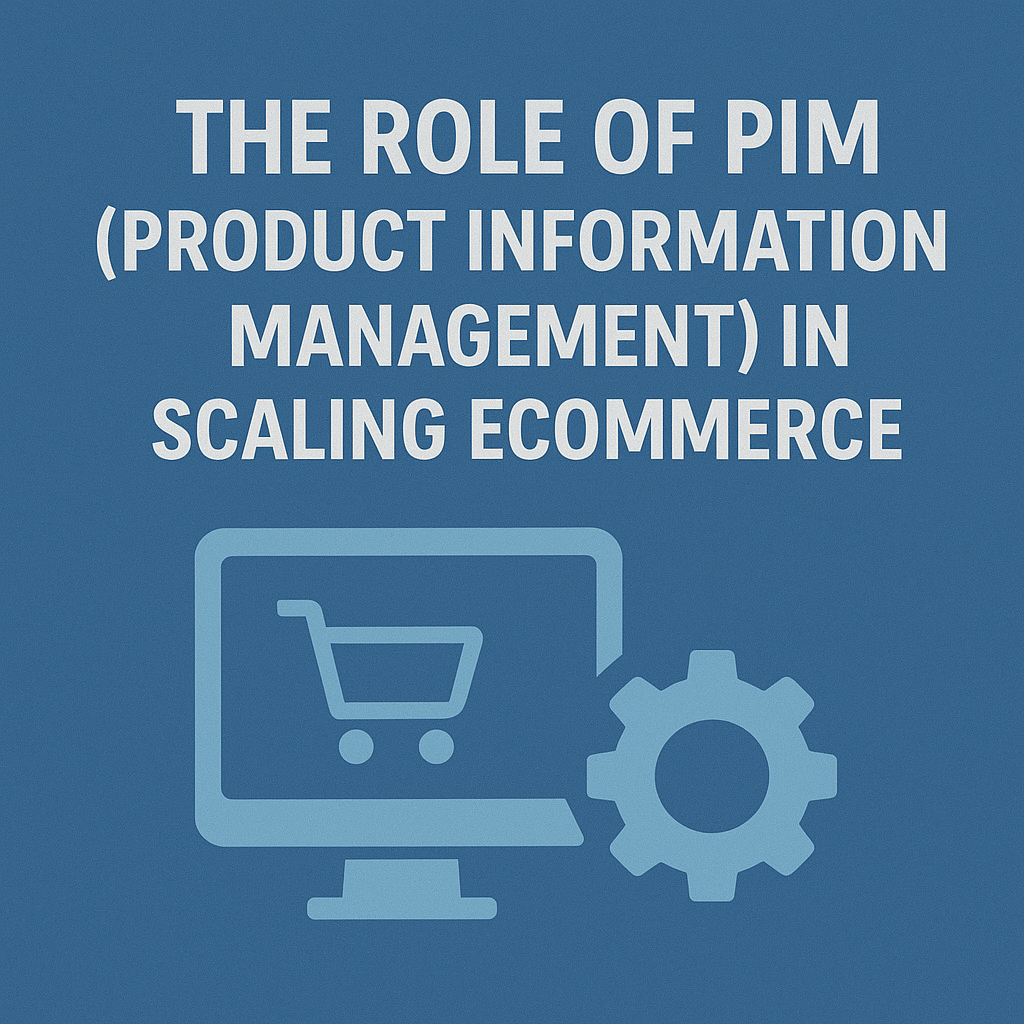
If you are running a small ecommerce store successfully without help, that commendable indeed! But what happens when you have to cater to an increasing user base? You have to scale up your ecommerce app to ensure consistency in user experience without compromising on workflows or product visibility and accuracy. How do you do that? New SKUs, new collections, new marketplaces, suddenly, you find managing your ecommerce store becomes a never-ending nightmare. That’s exactly where product information management (PIM) in ecommerce steps in.
What is PIM software? Let’s know more about the basics of product information management and explore how it keeps every bit of information consistent, accurate, and update-ready across products, languages, and platforms.
Setting the Stage: The Chaos of Scalable Ecommerce App Development
When growth starts happening, things get messy. Every product variation comes with multiple descriptions, attributes, images, specs, supplier data, and pricing tiers. If you’re also listing across Amazon, Shopify, eBay, and your own app, each of these channels will want data in a slightly different format. That’s dozens of spreadsheets, hundreds of edits, and endless headaches.
Managing product catalogs with PIM eliminates all this tedium. It acts as a single data repository where every product detail, from SEO keywords to technical attributes, reside safely. When you need to update your brand’s new summer collection or adjust dimensions for packaging, you only update it once. The system pushes the correct data everywhere.
Without it, scaling ecommerce quickly devolves into expensive manual corrections, botched listings, and inconsistent user experiences that cost you sales.
Understanding the Core: What Exactly Is PIM?
Simply speaking, product information management in ecommerce is your engine for efficiency. It’s not just another piece of software. It is a strategic process of collecting, cleaning, enriching, and distributing product information across your digital footprint.
From basic attributes like name, SKU, and price, to advanced data like compliance docs, regional translations, and multimedia, PIM software for ecommerce scaling brings order to the madness. Instead of chaos, you get centralized control over all things product-related.
Modern PIM tools connect directly with CMS, ERP, CRM, and inventory platforms, allowing seamless communication between departments. The result? A perfectly synced ecosystem where updates flow in real time—from backend management to the user’s shopping cart.wpvip+2
The Secret Weapon for Scalability: PIM Integration with Ecommerce Platforms
Integrating your PIM with ecommerce platforms is like handing your store a turbo boost. It ensures your product data stays consistent, regardless of where your customers are shopping.
With PIM integration with ecommerce platforms, any update you make automatically syncs across every storefront. No manual uploads, no waiting, no human errors.
Most PIM software for ecommerce scaling integrates natively with major ecommerce ecosystems like Shopify, BigCommerce, WooCommerce, Magento, Salesforce Commerce Cloud, and even niche industry-specific platforms. The result? Instant visibility on every channel without the burnout of re-formatting or re-uploading the same content thousands of times.
This integration not only saves time but also maintains your brand’s trust factor. Consistent product descriptions, uniform specs, and proper sizing data lead directly to better conversions and fewer returns.
Why PIM Is the Backbone of Scalable Ecommerce Product Management
Scalability isn’t just about adding more products; it’s about doing it sustainably. That’s where scalable ecommerce product management built on PIM principles matters.
When your business moves from hundreds of SKUs to tens of thousands, manual data handling simply can’t keep up. Each new product launch adds potential inconsistency, duplication, and compliance risks unless your system evolves.
PIM software for ecommerce scaling gives teams control over:
- Taxonomy (how products are organized)
- Attribute management (standardized specs)
- Automated distribution workflows
This means every stakeholder, the SEO manager, design team, customer service rep, or inventory analyst, works from the same up-to-date version.
It also gives powerful scalability tools like bulk edits, mass updates, multilingual content management, and marketplace compliance validation. Global brands use PIM to manage massive catalogs across regions where every market might demand different measurement units, packaging info, or safety certifications.
That’s true scalability, expanding without chaos.
The Hidden Advantage: A Smart Ecosystem That Cuts Costs
Scaling ecommerce requires growing fast without bloating operations. That means minimizing headcount, errors, and manual rework.
This is where PIM directly translates into measurable cost savings. Companies spend less on admin tasks, catalog updates, and support resolutions simply because automation takes over. Some firms even compare the operational savings from PIM software for ecommerce scaling to adjusting outsourcing costs or staff augmentation hourly rates for content and data teams.
By automating what used to require hourly updates and external staff, PIM delivers ROI quickly. Enterprises reduce dependency on external data management contractors, leading to major operating cost efficiencies while improving data accuracy.
The Power of Clean, Centralized Data
Bad product data sabotages growth. Incorrect specs, missing images, broken links, or inconsistent product identifiers kill credibility instantly. Managing product catalogs with PIM solves this at scale.
When all your product information lives in one place, version control becomes straightforward. Multiple users, editors, copywriters, marketing heads, can make updates confidently, without overwriting one another’s work.
These systems enforce validation rules, ensuring every new record meets your brand’s data quality standards. Need to add sustainability information, warranty clauses, or multi-currency pricing? Your PIM ensures that every format, field, and tag lines up flawlessly across the ecosystem.
Clean data = happy algorithms.
And happy algorithms = higher search visibility and conversions across your sales channels.
Accelerating Market Expansion
Entering new markets is complicated. There are new currencies, languages, tax structures, and consumer preferences you must address.
With ecommerce PIM, expanding into new currencies and regions becomes infinitely easier. A good PIM implementation guide for enterprises will include localization workflows: automatic language translations, region-specific formatting (like metric vs. imperial), and cultural context validations.
So whether you’re going cross-border in Europe or adding new suppliers across Asia, PIM integration with ecommerce platforms ensures your product listings are launch-ready fast, compliant, and culturally aligned.
This speed-to-market creates a competitive advantage. While others are wrestling with translation files, you’re already selling.
Team Collaboration Made Easy
Enterprise growth introduces complexities and silos. Teams lose track of who’s updating what. Product Information Management in ecommerce acts as the central nervous system for collaboration.
One platform gives everyone, from marketing to procurement, controlled access to approved product data. Real-time edits, version history, and permission-based access guarantee both control and collaboration.
This means even external agencies or distributors can pull accurate product feeds without bottlenecking your internal teams. That’s a huge step toward efficiency, especially for global enterprises or omnichannel retailers with complex workflows.
A Realistic Look at PIM Implementation Guide for Enterprises
Alright, so you’re convinced PIM is the next big step. But where do you start? Successful PIM implementation for enterprises follows a phased roadmap that minimizes disruption and maximizes ROI.
Here’s the breakdown:
Step 1: Evaluate Current Chaos
Audit where your data lives and identify inconsistencies or redundancies.
Step 2: Define Data Standards
Before importing into a PIM, create a taxonomy by defining every data field clearly.
Step 3: Choose the Right PIM Software
Match features with business goals. Look for PIM integration with ecommerce platforms, scalability, and automation.
Step 4: Clean and Import Data
Garbage in, garbage out. Deduplicate, validate, and standardize data before migration.
Step 5: Train Teams and Go Live
Onboard users, assign roles, and test integrations with smaller product batches first.
Step 6: Monitor and Optimize
Track how your teams use the PIM. Use dashboards and reports to refine workflows and integrations.
Following a structured PIM implementation guide for enterprises streamlines your path to success and builds a scalable framework that grows with you.
Final Thoughts
If you’re serious about scaling your brand, PIM software for ecommerce scaling isn’t an upgrade; it’s a necessity. So, if your dream is to build a brand that scales effortlessly, stays consistent across every market, and grows faster than your competitors can react, Product Information Management in ecommerce is the key that unlocks it all.

















